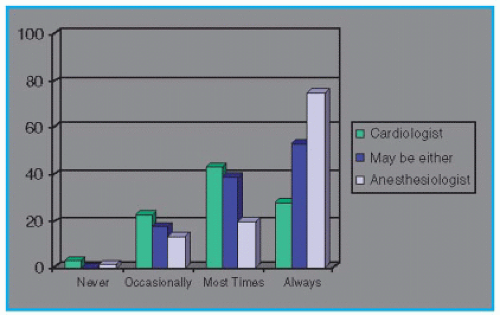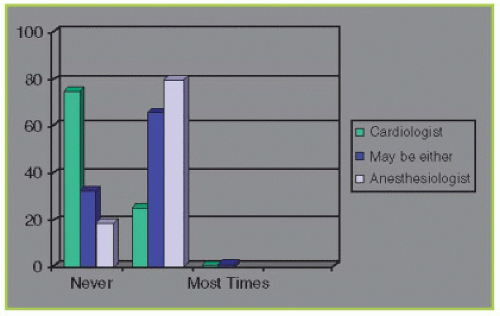Organization of TEE Service
Organization of TEE Service
Solomon Aronson1
Glenn S. Murphy2
Joseph P. Mathew2
Stanton K. Shernan2
1OUTLINE AUTHOR
2ORIGINAL CHAPTER AUTHORS
I. INTRODUCTION
Since its introduction in the 1980s, intraoperative TEE has become a routine component of cardiac anesthesia practice and is commonly employed during noncardiac procedures for aiding diagnostics. The majority of intraoperative TEE examinations are preformed and interpreted by anesthesiologists in the United States and Canada (
Figs. 7-1 and
7-2).
II. REQUIREMENTS
Investment in people and personnel
Close collaboration with other services
Investment for maintenance and equipment upgrades
Space for equipment storage, archiving studies, and reading
Understanding of billing compliance
A quality assurance program
III. TRAINING AND CREDENTIALING
1996: Task force on practice guidelines for TEE established skills recommended to perform an exam and are listed in
Table 7-1
2003: Task force on training guidelines established recommendations for basic and advanced levels
Basic level 150 exams be performed with appropriate supervision including 50 that are personally performed
Advanced level 300 exams be performed with appropriate supervision including 150 that are personally performed
It is recommended that basic and advanced level of training maintain 20 and 50 hours of CME, respectively.





